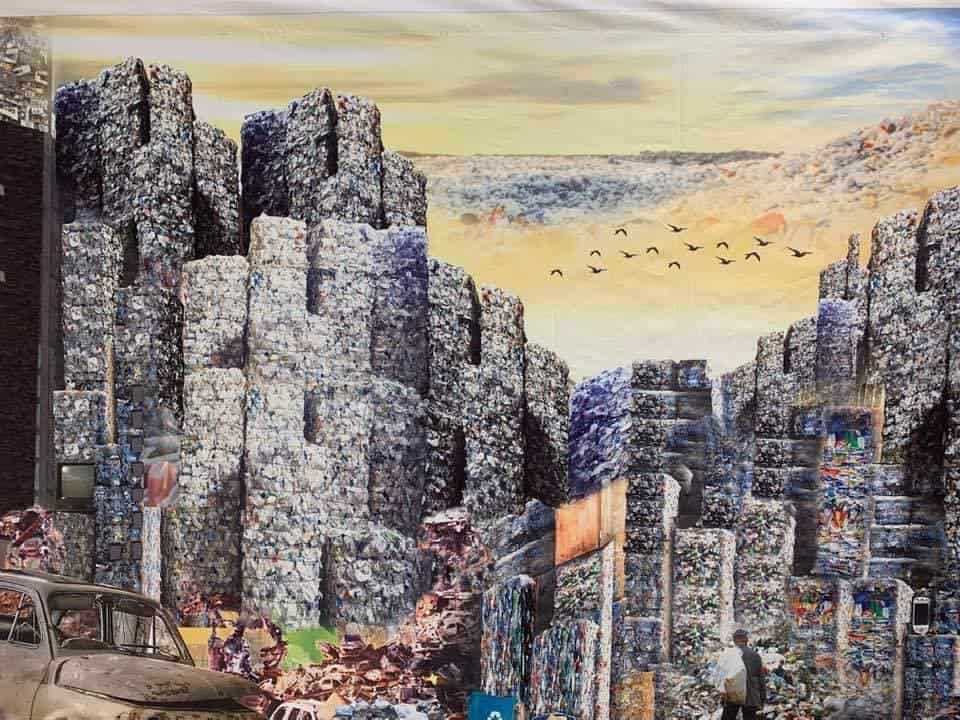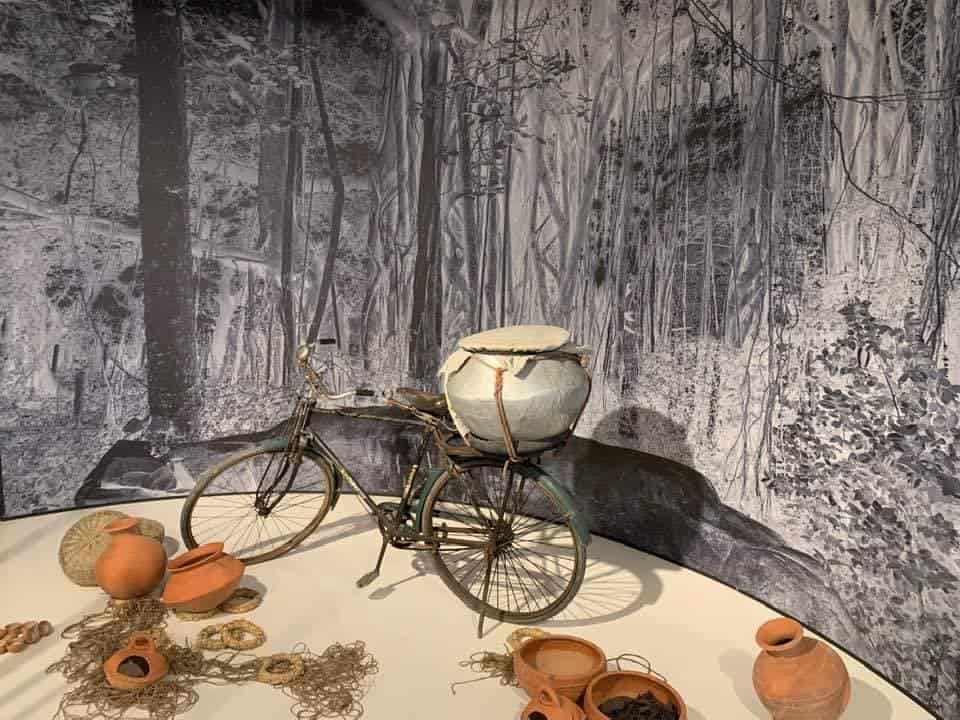An exhibition celebrating Climate Diplomacy Week has raised new hope for saving the East Kolkata Wetlands (EKW). While conscientious adults have already doing their bit, this time, young residents of the neighbourhood, along with some school students, are getting ready to take up the role of ambassadors and work towards saving the East Kolkata Wetlands.
Crisscrossed by creeks and canals, the EKW are the world’s largest fully functional organic sewage management system and were designated a “wetland of international importance” under the Ramsar Convention on 19 August 2002. In the marshy land east of Calcutta, 248 species of birds and 22 species of mammals were observed in the 1960s (A.K. Ghosh, 1991). More recent surveys have found the number of bird species reduced by almost 85 percent (Calcutta Environmental Management Strategy and Action Plan (Department of Environment; India, 1997).
It all began when the German Consulate General, Kolkata together with Disappearing Dialogues Collective and Active Citizens Together for Sustainability (ACTS) organised an exhibition recently (Sep 24 to Sep 29) at Kolkata Centre for Creativity. The exhibits put together by 50 students of Bamunghata High School and Kheadaha High School, both located in the Wetlands, elaborated on the rich, yet disappearing diversity of everyday life, crafts and traditions of EKW community. It also explored the degrading environmental conditions of EKW and showed how Kolkata could be affected by the degradation.

The weeklong exhibition held at the Kolkata Centre for Creativity explored the degrading environmental conditions of EKW and how the city could be affected by such degradation. Pic: Ajaay Mittal/Facebook
The children of the Wetlands were soon joined by the students from South City International School, Heritage School and Birla High School for Boys. This time, the students from the city schools presented their perspectives on the degradation of the EKW.
“Now that we have been able to bring the students of the city and the Wetlands on the same platform, we feel, they can work together and spread the message of saving the EKW. We will now appoint about 10 ambassadors from each of these five schools who will be talking about the need for recycling and elimination of plastics, which are degrading the environment of EKW,” said Nobina Gupta, who runs Disappearing Dialogues and is the curator of this exhibition.
While the students from EKW will be empowered with knowledge of how they can locally fight and raise awareness regarding the environmental concerns of their dwelling area, the students from Kolkata will be trained to increase awareness among city dwellers about the importance of EKW and steps to save the Wetlands.
“We will be trying to raise funding so that we can award fellowships to these students and further encourage them. The ambassadors will help people understand that the people of Kolkata cannot look away from the climate crisis of the Wetlands, as it will be affecting them too. And the dwellers of the Wetlands need to bring some changes too, which the ambassadors would propagate,” Nobina added.
Building awareness
According to Disappearing Dialogues and ACTS, in order to help the Wetlands survive, the children here should have rightly grounded aspirations. Their desire to ape modern urban lifestyles should not push these young adults and children towards unsustainable living that will destroy the Wetlands. Both organisations are striving to educate the children about this as they work with them.
The programme will encourage students from the Wetlands to use their traditional knowledge, throw garbage in designated places and save these lands from encroachers. Also, ambassadors from Kolkata schools would be visiting the Wetlands to gain a better understanding of the place.
As a first step, students of Classes 5 to 8 of Bamunghata High School and Kheadaha High School have been provided with a book on EKW. “The villages near my school are economically backward and most of the students here are first generation learners. Their socio-economic environment does not give them much scope to understand the importance of the Wetlands. Currently, we have dedicated one class a week to education about the Wetlands; the workshops leading to the exhibition has helped the students understand what is ailing the area and how the population around can help,” said Altup Sekh, headmaster of Kheadaha High School.
Altup believes that the student ambassadors will be able to bring about changes in the mindset of their fellow students, as well as their family members and neighbours. And he is not wrong. Nivedita Naskar, a class IX student of Bamunghata High School now knows all about the dos and don’ts that can save the Wetlands.
“I never knew that I live in an area which is so important for the ecology of Kolkata. Also, I knew nothing about pollution and climate change. Now I know about the importance of waste segregation in our everyday life and the need to end the use of single-use plastics. I have been asking everyone around me to do the same,” said Nivedita.
Art for a cause
The exhibition, along with its Wetland ambassadors, will now become a travelling exhibition. “We want to put up the exhibition in public areas of the city so that people wake up to the threat of climate change and the necessity of saving the Wetlands of Kolkata,” said Gupta. “We aim to refresh the memory of its citizens on what is at risk of being lost permanently; we shall do this by contrasting past and present Kolkata through pictures, historical documents, and local arts and crafts put together by these students,” she added.

The exhibits put together by 50 students of Bamunghata High School and Kheadaha High School, both located in the Wetlands, elaborated on the rich, yet disappearing diversity of everyday life, crafts and traditions of the community. Pic courtesy: Ajaay Mittal/Facebook
The exhibits elaborate on the rich, yet disappearing everyday practices, crafts and traditions of EKW community. Most of the exhibits have been evolved through a long process of engagement with the peri-urban community of youth, to facilitate environmental awareness and conservation by combining innovation and interventions that build a constituency among the youth to rekindle the ecologically challenged cultural traditions based on the natural resource management practices of EKW. The installation by the students were made of upcycled and recycled waste such as plastic bottles, jars, caps and even tyres.
Now, the children are getting ready to take the big leap and get into the role of ambassadors to save the EKW.